 2001 Hyundai Terracan Dimensions, Size & Specs
2001 Hyundai Terracan Dimensions, Size & SpecsMeasurements of the 2001 Hyundai Terracan, engineered for optimal performance and comfort
| Dimensions | |
|---|---|
| Length: | 4710 mm185.4 in15.5 ft |
| Width: | 1860 mm73.2 in6.1 ft |
| Height: | 1795 mm70.7 in5.9 ft |
| Trunk Capacity: | 1170 liter41.3 cu ft |
| Trunk Capacity (Max): | 1955 liter69.0 cu ft |
| Weight Specifications | |
| Curb Weight: | 1990-2220 kg4387-4894 lbs |
| Maximal permitted Weight: | 2315-2620 kg5104-5776 lbs |
| Tire Specifications | |
| Rims Sizes: |
|
| Tire Sizes: |
|
The Hyundai Terracan, produced from 2001 to 2006, is a rugged mid-size SUV designed to blend off-road capabilities with everyday usability. Measuring 4710 mm (185.4 inches) in length and 1860 mm (73.2 inches) in width, it offers a substantial road presence while maintaining manageable dimensions for urban driving. Height ranges from 1790 to 1795 mm (70.5 to 70.7 inches), contributing to its commanding stance and improved ground clearance essential for rough terrains. The curb weight varies between 1990 and 2220 kg (4387 to 4893 lbs), reflecting its sturdy build which also supports a maximum weight of 2315 to 2620 kg (5104 to 5771 lbs). This weight capacity enables the vehicle to handle heavy loads and towing demands typically expected from an SUV of this class. Storage utility is a key asset of the Hyundai Terracan, offering 1170 liters (41.3 cubic feet) of luggage space under the rear seat configuration. When rear seats are folded down, the luggage capacity dramatically increases to 1955 liters (69 cubic feet), providing ample room for large cargo or outdoor gear. The vehicle is equipped with 15 or 16-inch rims, compatible with tire sizes 235/75 R15 and 255/65 R16, facilitating adaptability to diverse driving conditions and improved traction. Overall, the Hyundai Terracan combines robust SUV dimensions, substantial payload capacity, and generous interior cargo volume, making it a versatile choice for families and adventure seekers alike looking for a dependable 4x4 vehicle during the early 2000s.
Discover the standout features that make the 2001 Hyundai Terracan a leader in its class
Have a question? Please check our knowledgebase first.
The Hyundai Terracan (2001-2006) measures 4710 mm (185.4 inches) in length, 1860 mm (73.2 inches) in width, and stands between 1790 mm to 1795 mm (approximately 70.5 to 70.7 inches) in height. These dimensions place the Terracan firmly within the midsize SUV category, offering a spacious footprint suitable for both urban and off-road use. The vehicle's height includes roof rails and varies slightly depending on trim and optional equipment, which may cause minute variations within the stated range.
The curb weight of the Hyundai Terracan ranges from 1990 kg to 2220 kg (4387 to 4894 lbs), depending on the equipment and version. The maximum allowable weight, which includes the vehicle itself along with passengers, cargo, and any additional load, is between 2315 kg and 2620 kg (5105 to 5771 lbs). This high maximum weight capacity reflects the Terracan's design as a robust SUV capable of handling heavy loads or towing, making it suitable for both family and utility purposes.
The Hyundai Terracan offers a generous luggage capacity of 1170 liters (41.3 cubic feet) with the rear seats in their upright position, providing ample space for everyday needs such as shopping bags or luggage for short trips. When the rear seats are folded down, this capacity expands significantly to 1955 liters (69 cubic feet), allowing for larger items or bulkier equipment to be transported. This versatility makes the Terracan practical for diverse uses, from family outings to outdoor adventures.
Standard home garages typically measure around 2438 mm (8 feet) in width and 4877 mm (16 feet) in length. With the Terracan measuring 4710 mm (185.4 inches) in length and 1860 mm (73.2 inches) in width, it fits comfortably within the length and width parameters of most standard garages, albeit with limited extra space around the vehicle particularly in narrow garages. The height of up to 1795 mm (70.7 inches) should not pose clearance issues for normal single-story garages. Owners should verify specific garage dimensions but generally, the Terracan is suitable for standard residential garages.
The Hyundai Terracan, introduced in 2001, was Hyundai's first true midsize SUV and did not have a direct predecessor model within Hyundai's lineup. However, compared to earlier smaller SUVs or crossovers offered by other brands or earlier Hyundai vehicles focused on compact sizes, the Terracan represented a significant increase in overall size and capability. Its robust dimensions and weight set it apart as a more capable, spacious off-road SUV compared to smaller predecessors or competitors, aligning Hyundai with global midsize SUV market demands.
In the early 2000s, the Hyundai Terracan's size was competitive with other midsize SUVs like the Toyota Land Cruiser Prado, Mitsubishi Pajero, and Nissan Pathfinder. Its length of 4710 mm (185.4 inches) and width of 1860 mm (73.2 inches) were on par with these rivals, while its height around 1790-1795 mm (70.5-70.7 inches) offered a slightly taller build contributing to increased headroom and cargo capacity. The Terracan was generally heavier than some competitors, reflecting its rugged construction. Overall, its size and robust construction made it a practical alternative to well-known midsize SUVs of the era.
The Hyundai Terracan comes equipped with 15-inch or 16-inch rims, which support tire sizes of 235/75 R15 and 255/65 R16 respectively. These tire sizes are suitable for both urban driving and moderate off-road conditions, providing a good balance between ride comfort, traction, and durability. The 16-inch rims with 255/65 tires usually offer a slightly smoother ride and better road grip, whereas the 15-inch options tend to be more rugged and easier to maintain for off-road use.
With a height ranging from 1790 to 1795 mm (approximately 70.5 to 70.7 inches), the Hyundai Terracan sits taller than average sedans or compact SUVs. This elevated height improves driver visibility and off-road clearance but may pose challenges when driving under low-clearance obstacles such as parking garages, some urban parking structures, or drive-thrus. However, typical suburban and many urban parking facilities can accommodate this height without issue. Drivers should be cautious of height restrictions but generally will benefit from the elevated seating position and off-road capability.
The Hyundai Terracan’s sizable dimensions translate into a roomy interior, especially for a midsize SUV of its time. With a width of 1860 mm (73.2 inches) and substantial height, it provides comfortable seating for five occupants with ample headroom and legroom. The elevated seating position enhances visibility for both driver and passengers. Interior space is further optimized by the large cargo area, especially with rear seats folded, supporting long trips and active lifestyles. Overall, the Terracan offers a practical and comfortable cabin suitable for families and outdoor enthusiasts alike.
The Hyundai Terracan, weighing between 1990 kg and 2220 kg (4387 to 4894 lbs), is built on a sturdy body-on-frame chassis designed for off-road durability and robustness. Its maximum weight rating from 2315 kg to 2620 kg (5105 to 5771 lbs) enables it to carry heavy loads safely, including passengers and cargo, without compromising stability. The tire options paired with its suspension setup further enhance its ability on rough terrains. Overall, the vehicle’s size and weight contribute to solid off-road capability, making it suitable for adventurous driving and moderate towing needs.
Discover similar sized cars.
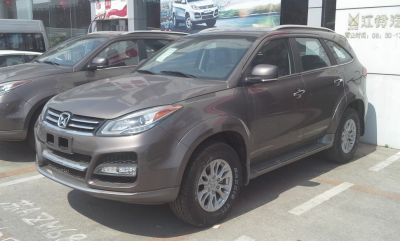
| Production: | 2011-present |
|---|---|
| Model Year: | 2011 |
| Length: | 4740 mm186.6 in |
| Width: | 1895 mm74.6 in |
| Height: | 1862 mm73.3 in |
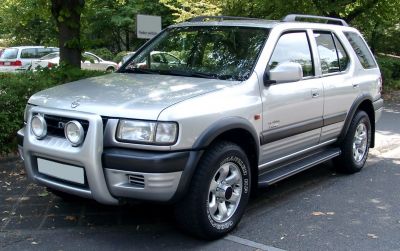
| Production: | 1998-2003 |
|---|---|
| Model Year: | 1998 |
| Length: | 4658 mm183.4 in |
| Width: | 1787-1814 mm70.4-71.4 in |
| Height: | 1740 mm68.5 in |
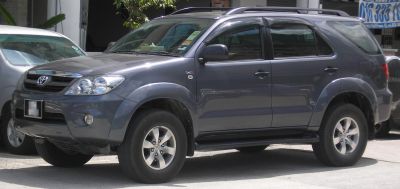
| Production: | 2004-2008 |
|---|---|
| Model Year: | 2005 |
| Length: | 4695 mm184.8 in |
| Width: | 1840 mm72.4 in |
| Height: | 1795 mm70.7 in |
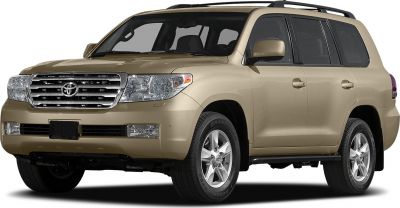
| Production: | 2009-2013 |
|---|---|
| Model Year: | 2010 |
| Length: | 4760 mm187.4 in |
| Width: | 2185 mm86.0 in |
| Height: | 1845-1890 mm72.6-74.4 in |

| Production: | 1997-2004 |
|---|---|
| Model Year: | 1998 |
| Length: | 4658 mm183.4 in |
| Width: | 1785-1814 mm70.3-71.4 in |
| Height: | 1740-1748 mm68.5-68.8 in |
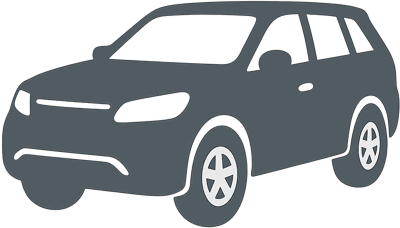
| Production: | 2009-2010 |
|---|---|
| Model Year: | 2009 |
| Length: | 4649 mm183.0 in |
| Width: | 1810 mm71.3 in |
| Height: | 1745 mm68.7 in |
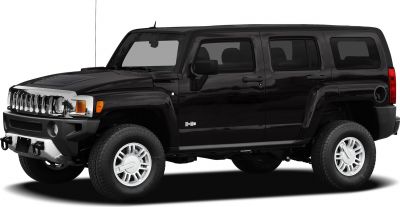
| Production: | 2005-2010 |
|---|---|
| Model Year: | 2006 |
| Length: | 4742 mm186.7 in |
| Width: | 1897 mm74.7 in |
| Height: | 1872-1893 mm73.7-74.5 in |

| Production: | 2005-2011 |
|---|---|
| Model Year: | 2005 |
| Length: | 4710 mm185.4 in |
| Width: | 1871 mm73.7 in |
| Height: | 1820 mm71.7 in |
